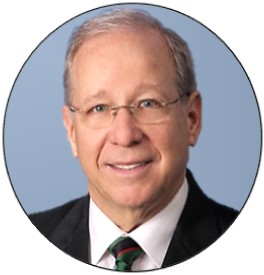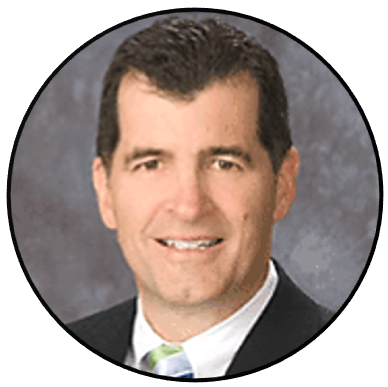Advisors Need To Help their Older Clients Stay Employed Or Get Re-Employed
Make no mistake: This will be a big problem, especially in light the job displacement of older Americans.
“Older workers (aged 55 and over) after being displaced were less likely than their younger counterparts to find work and substantially more likely to drop out of the labor force, according to a report just published by Sara Rix of AARP’s Public Policy Institute. “Long-tenured older workers, i.e., those who had been in their jobs for at least three years, were about 28% of the workers displaced from 2009-2011 but only 21% of the displaced workers who were reemployed.”
Here’s the rest of Rix’ report:
From January 2009 through December 2011, 2.5 million workers aged 55 and older were displaced from their jobs according to the Bureau of Labor Statistics; 1.7 million (68.5%) of them had been in their jobs for at least three years and were considered long-tenured workers. Displaced workers are those who lost or left their jobs because of a company or plant closing or move, insufficient work, or the abolition of a position or shift.
The number of older workers displaced in the three-year period 2009 through 2011 was lower than it was from 2007-2009, when 2.7 million older workers had been displaced, 1.8 million (65.6%) of them long-tenured workers.
Older workers were substantially less likely than their younger counterparts to find work after displacement—just under half of workers aged 55-64 were working as of January 2012, compared to about six in ten aged 25 to 54 (tables 1a and 1b). Even the youngest displaced (20-24) had a higher reemployment rate than older displaced workers.
Workers aged 55 and over were nearly 20% of all workers displaced from 2009 through 2011; they were, however, only about 15% of the reemployed (table 2, top panel). The data for long-tenured workers also show that older workers were underrepresented among those who had found work as of January 2012—they were 28% of the long-tenured displaced but only 21% of the reemployed (table 2, bottom panel).
Less than one-fourth of displaced workers aged 65 and older had found work by January 2012. Displaced workers in this age group were far more likely to drop out of the labor force. A sizable portion of workers aged 55-64 also left the labor force. In fact, workers in this age group were about twice as likely as prime-age workers (aged 25-54) to leave the labor force after displacement (tables 1a and 1b).
Reason for displacement varied by age, at least among long-tenured workers (table 3). The youngest workers were most likely to have been displaced because their plant or company closed down or moved. Having their position or shift abolished was a more common reason among older workers than younger.
Rates of reemployment were higher for all age groups as of January 2012 for people displaced from 2009 through 2011 than as of January 2010 for people displaced during 2007 through 2009. This was the case for all displaced workers and for those who had lost long-tenured jobs. In both years, younger workers fared better when it came to reemployment. Displaced workers were also somewhat more likely to have dropped out of the labor force by 2012 than as of 2010.
Table 1a: January 2012 Employment Status of All Workers Who Lost Jobs, 2009 through 2011
|
Age |
Employed |
Unemployed |
Not in Labor Force |
Total |
|
Total, 20+ |
56.9% |
27.5% |
15.7% |
100.0% |
|
20-24 |
54.4% |
27.2% |
18.4% |
100.0% |
|
25-54 |
60.7% |
27.4% |
11.9% |
100.0% |
|
55-64 |
49.2% |
28.3% |
22.5% |
100.0% |
|
65+ |
22.3% |
27.2% |
50.5% |
100.0% |
Table 1b: January 2012 Employment Status of Long-tenured Workers* Who Lost Jobs, 2009 through 2011
|
Age |
Employed |
Unemployed |
Not in Labor Force |
Total |
|
Total, 20+ |
56.0% |
26.7% |
17.4% |
100.0% |
|
20-24 |
61.7% |
22.4% |
15.9% |
100.0% |
|
25-54 |
61.5% |
26.2% |
12.3% |
100.0% |
|
55-64 |
47.4% |
28.1% |
24.5% |
100.0% |
|
65+ |
23.5% |
27.5% |
49.0% |
100.0% |
*Long-tenured workers had been in their jobs for at least three years.
Table 2. Age Distribution of Workers Displaced 2009-2011 and Reemployed as of January 2012
|
|
|
|
|
|
Age |
Number Displaced (in 000s) |
Age Distribution of Displaced |
Age Distribution of Reemployed* |
|
All displaced |
|
|
|
|
Total, 20+ |
12,854 |
100.0% |
100.0% |
|
20-24 |
1,118 |
8.7% |
8.3% |
|
25-54 |
9,220 |
71.7% |
76.5% |
|
55+ |
2,515 |
19.6% |
15.1% |
|
55-64 |
2,006 |
15.6% |
13.5% |
|
65+ |
509 |
4.0% |
1.6% |
|
|
|
|
|
|
Long-tenured** |
|
|
|
|
Total, 20+ |
6,121 |
100.0% |
100.0% |
|
20-24 |
128 |
2.1% |
2.3% |
|
25-54 |
4,268 |
69.7% |
76.6% |
|
55+ |
1,724 |
28.2% |
21.1% |
|
55-64 |
1,338 |
21.9% |
18.5% |
|
65+ |
386 |
6.3% |
2.6% |
Calculated from Tables 1 and 8 in Worker Displacement: 2009-2011.
*Employed as of January 2012.
**Long-tenured workers had been in their jobs for at least three years.
Table 3. Reason for Displacement, Long-tenured Workers*
|
Age |
Plant/company closed down/moved |
Insufficient work |
Position/shift abolished |
Total |
|
Total, 20+ |
30.8% |
39.5% |
29.7% |
100.0% |
|
20-24 |
40.5% |
39.3% |
20.3% |
100.0% |
|
25-54 |
31.8% |
40.2% |
28.0% |
100.0% |
|
55-64 |
27.8% |
37.0% |
35.2% |
100.0% |
|
65+ |
26.7% |
40.8% |
32.5% |
100.0% |
*Displaced from January 2000 through December 2012 from jobs held for at least three years.
So why do advisers need to worry about all this?
Well, one reason is this: Many Americans age 65-plus who are collecting Social Security, and especially those who are in what’s called the upper income quintile, earn about 40% of their total income in retirement from working. It’s not clear from the research whether older Americans are working after age 65 out of need or want. But one thing is clear, they are working for money.
And advisors who want to stay ahead of the curve should heed the current statistics. Older Americans might have a tough go of staying employed or getting re-employed, according to AARP. And if advisors want to prove their worth, they ought to consider looking at ways to help improve their client’s human capital, not just improve their financial capital.

















